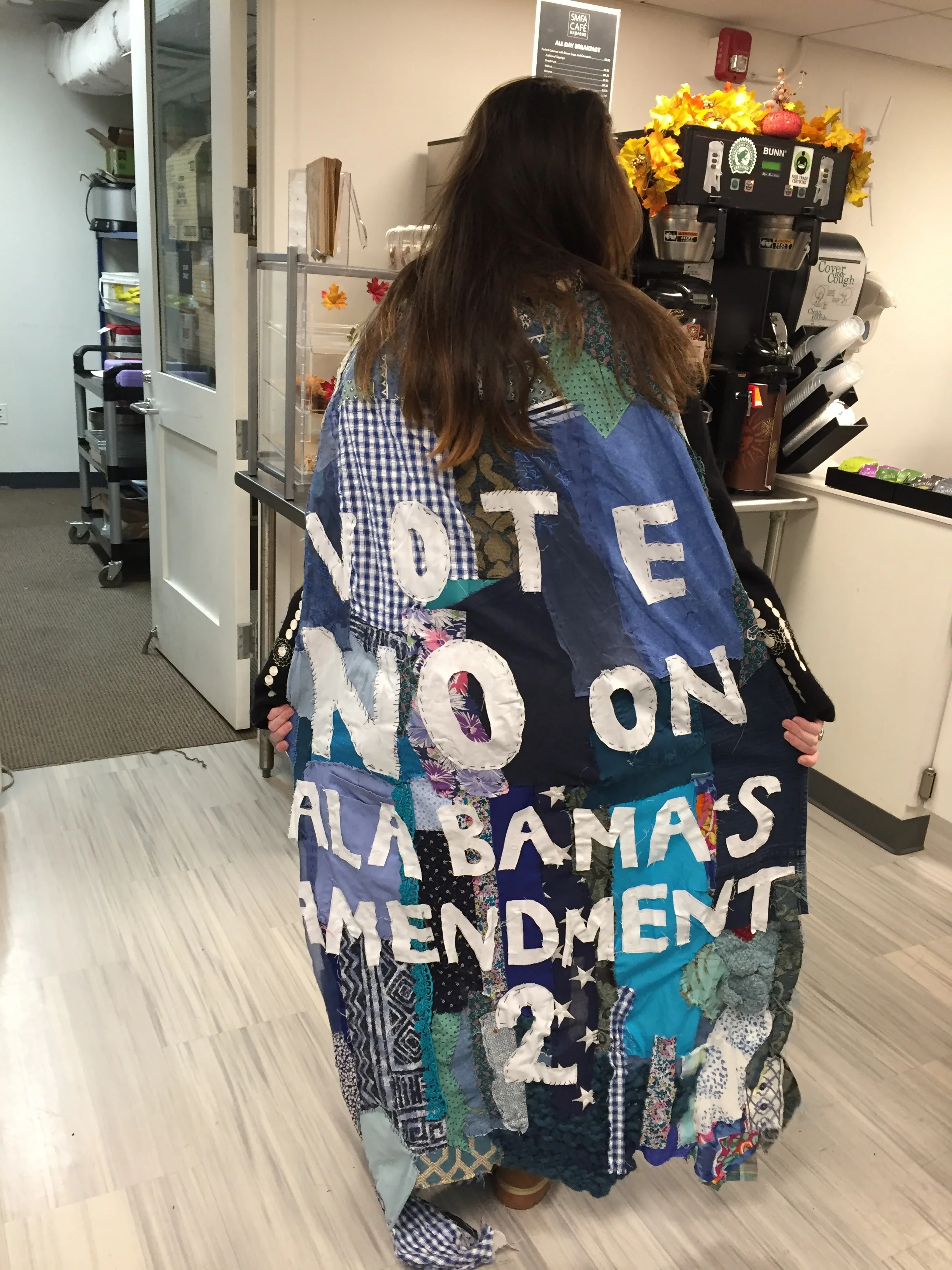These tapestries are part of an ongoing series of protest banners titled State of the Union which responds to current events and are used in direct activism. Many of these banners are made collaboratively or made from donated materials to embed the work with multiple perspectives and facilitate opportunities for coalition building. The banners acknowledge the ongoing attack on human rights coming out of the Trump era and white backlash to the Black Lives Matter Movement while also celebrating the activism that is present in these states by those most affected. By its nature, hand sewing is a slow and repetitive process that conveys a long-term personal commitment to the degradation of these oppressive systems, and in opposition to the way information is only considered relevant as long as it is trending on social media or within the 24 hour news cycle.
Vote No On Alabama’s Amendment 2, 2018, Hand-quilted protest banner made from donated fabric
This hand-quilted banner was worn on election day, November 6, 2018, in protest of Alabama’s Amendment 2. The proposed amendment, which was passed with 59% of the vote, made “it state policy to "recognize and support the sanctity of unborn life and the rights of unborn children, including the right to life” and “to state that no provisions of the constitution provide a right to an abortion or require funding of abortions.”
No Criminalizing Care, Protect People from Policies like Alabama’s SB184 and HB322, Hand Quilted Protest Banner, 2022
This banner represents the shape of Alabama and the color scheme of the Trans pride flag. In this way, the piece is in protest to Alabama’s ongoing attack on the rights of Queer and Trans youth while celebrating the activism that is present in the state by those most effected.
Prevent Policies Like AL’s HB314, 2019, Hand-quilted protest banner made from donated fabric, and laser-cut mirrored plexiglass uterus diagram
This hand-quilted banner was made the night before and during my Masters of Fine Arts Thesis Exhibition Reception and constructed in collaboration with, Timothy Manalo, Paulina McNeil, Elayne Noik, Anja DuBois, Josh Hastings, Cameron Barker, YX Tong, and Chole Crozier. I wore the banner throughout my Thesis Reception on May 17th, 2019 to protest Alabama’s HB314 Abortion Ban which was passed on Tuesday, May 14th by Alabama’s Senate and signed into law by Alabama’s Governor, Kay Ivey within less than 24 hours. Alabama’s Senate passed the bill with a 25-7 vote. The Ban made “abortion and attempted abortion felony offenses except in cases where abortion is necessary in order to prevent a serious health risk to the unborn child's mother; to provide that a woman who receives an abortion will not be held criminally culpable or civilly liable for receiving the abortion.” The Ban is willfully in violation of the U.S. Supreme Court’s decision in Roe v. Wade, 410 U.S. 113 8 (1973.) In this way, the Ban seeks to be contested by the Supreme Court and threatens the precedent set by Roe v. Wade.
Lifespan of Roe, Textile Installation, 2022
This simple tapestry functions like a timeline or bar graph to visualize a comparison between the 1973 and 2022 Supreme Court rulings on reproductive freedom. Lifespan of Roe acknowledges that our laws do not always serve in the best interest of the public, often seek to oppress rather than empower, and are never guaranteed.











